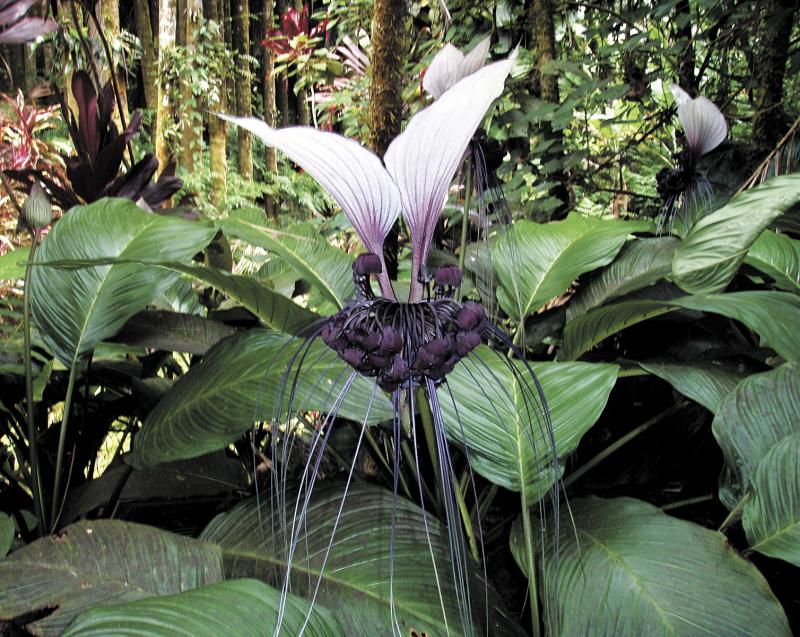In the heat of summer we may not only have bats in the belfry, but bats in the garden. Scary things, bats, hold your breath - I hear a bat.
Gardeners know that bats aren’t blood-sucking vampires.
Unless they’re so-called vampire bats native to the New World from Mexico to Argentina. Vampire bats really do drink blood. It is rare for a vampire bat to bite a person - but when it does, it will return the next night to drink that same person’s blood.
In the garden, a single bat will eat up to 8,000 insects every night. No wonder that bats are symbols of happiness in both China and Japan. Indeed, the Chinese pronounce the words for bat and good fortune the same: “fu.”
And here in the heat of summer we have indoor bats. The White Batflower (Tacca integrifolia) has huge, glistening white flowers up to eight inches across, with long tendrils hanging from the center.
You can expect up to eight flowers successively for months at a time. With their big, glossy leaves they do best in low light, so a spot away from direct sunlight is ideal.
Make sure there is good air circulation. Daily misting will keep them happy but isn’t necessary. Water regularly, keeping the soil moist, but not waterlogged.
The batflower is native to Southeast Asia, and actually in the yam family, so it likes warmth, with a minimum temperature of 60 F degrees. Avoid drafts or hot spots.
White Batflowers are heavy feeders, meaning they need a lot of nutrition while actively growing from spring through early autumn. During this time, feed them every two weeks with a diluted liquid houseplant fertilizer. You can also use a liquid fertilizer made for orchids.
Unlike many plants that grow from rhizomes, White Batflowers do not like being pot-bound, so you may need to repot them from time to time. Repot them right after they finish blooming in the spring, before the summer growth spurt. If the rhizome is large enough, take cuttings.
Pot the cuttings immediately. Use a well-draining, rich potting soil mix. Use a strongly acidic soil, with a pH of 5.1 to 5.5. You can add organic houseplant fertilizer to the potting soil if you like.
Enjoy White Batflowers on the plants, because they don’t do well as cut flowers.
Finding White Batflowers can be a challenge, so ask at local nurseries or order by mail from greenhouses such as Logees (www.Logees.com).
Get a White Batflower, and while you hide from the heat, ponder its incredible, somewhat scary blooms, and wonder - how do vampire bats return to the same victim the next night? By recognizing each person’s unique breathing pattern.
Hold your breath - I hear a bat.




















































